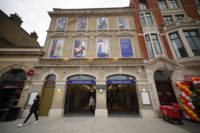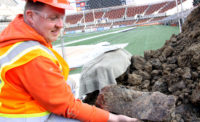Some 60 archaeologists in London have started excavating about 3,000 skeletons dating back to 1569 from the city's first municipal burial ground. The excavation will allow construction to start on a new entrance to the Crossrail railroad at Liverpool Street Station.
Thousands of Londoners, many of whom were victims of plague, were buried up to the mid-18th century at the Bedlam burial ground, which took its name from the nearby Bethlem Royal Hospital for the mentally ill.
"There are up to 6 meters of archaeology on site, in what is one of the oldest areas of the city," according to Nick Elsden, project manager with the Museum of London Archaeology, which is handling the dig for the railroad owner Crossrail Ltd.
All the human remains are due to be removed by early April. Then, archaeologists will dig through medieval marsh deposits and Roman remains until September, when construction of the new ticket hall will start. Laing O'Rourke Construction holds an approximately $442-million contract to build the station, one of eight total. Stations are essentially concrete boxes built within slurry trench walls at either end of the 240-m-long platform tunnels.
So far, the new system's 40 construction sites have produced more than 10,000 artifacts, according to Crossrail.
The $22-billion project, including 21 km of 6.2-m-dia segmental concrete-lined twin bore tunnels, is due to open in 2018.
Crossrail currently operates more than 40 construction sites, and archaeological investigations are carried out at each site ahead of main construction to build the central stations, according to the project website.
"The project gives archaeologists an exceptional opportunity to reveal the layer cake of history that is hidden below the city's streets. We are now over halfway through our planned archaeological programme," the website states.
Crossrail's archaeological team will produce detailed reports on their findings. All the significant artifacts will be provided to the Museum of London and the Natural History Museum.








Post a comment to this article
Report Abusive Comment